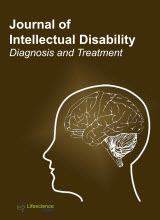jiddt
|
|
Abstract: Introduction: nowadays, one of the remarkable issues in dentistry is jaw growth pattern and tooth and mouth conditions (oral conditions) on patients’ quality of life and daily activities. This study was done to evaluate skeletal malocclusion effect on the quality of life and oral health in Ahvaz. Results: there is not any significant difference between average quality of life of people with Cl III and Cl II skeletal (p=0.761), but there is a meaningful relation between Cl II skeletal and normal skeletal groups and also between Cl III skeletal and normal skeletal groups (p<0.001). Keywords: Oral health, quality of life, skeletal malocclusion.
|
|
|
Abstract: Background and Objective: Although current evidence has demonstrated the efficacy and immunity of Alteplase, further studies are needed to evaluate its functioning in the therapeutic system. This study aims to assess the effect and immunity of tissue plasminogen activator (tPA) in the treatment of acute ischemic stroke (AIS). Keywords: Acute ischemic stroke, Thrombolytic therapy, NIHSS, mRS.
|
|
|
Abstract: Purpose: Since various factors such as parents' attitudes and knowledge can affect the use of fluoride, this study aims to assess the relationship between children's parents' attitudes and knowledge towards preventive caries methods with their children's caries experience. Keywords: Knowledge, Attitude, Parents, Prevention, Caries.
|
|
|
Abstract: Background and Objective: Healthcare and laboratory workers in hospitals have a higher exposure to hospital-acquired infections (HAIs) than the general populations. Tuberculosis (TB) infection is a common HAI that is communicated from the patients with TB admitted or hospitalized in the healthcare centres. This study aims to determinate the incidence and prevalence of latent TB infection among healthcare workers in the major Hospitals in Ahvaz, Khuzestan province, Iran. Keywords: Tuberculosis (TB), healthcare workers, laboratory workers, prevalence, Ahvaz.
|
|
|
Abstract: The idea of this research paper arose out of an awareness that students with language learning disabilities are completely ignored in the educational system and there are no special programs that cater to these students. They are placed in normal schools that are not prepared to deal with their unique difficulties. This paper, therefore, is an attempt to provide teachers with multiple-strategies models for teaching English language skills to these students at the intermediate level and beyond. More specifically, this research will help pre-and in-service teachers to:
Thus, the target audience of this research includes pre-and in-service regular teachers, special education teachers, school psychologists, counsellors, and administrators. Keywords: Language, teaching, methods, students, special needs.
|


